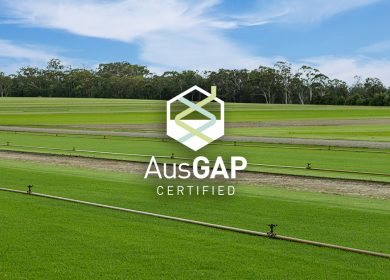Timing pre-emergent herbicide applications to effectively control weeds

Weeds are a persistent problem in turfgrass management, competing with the desirable grass species for nutrients, water, and space. Pre-emergent herbicides are valuable tools for preventing weed seeds from germinating and establishing in turfgrass. However, the timing of pre-emergent herbicide applications is crucial to their effectiveness in weed control. In this blog we will discuss the significance of timing when applying pre-emergent herbicides, and insights into optimising their efficacy in turfgrass management practices.
What are pre-emergent herbicides?
Pre-emergent herbicides are chemical formulations designed to inhibit the germination and growth of weed seeds in the soil. These herbicides create a barrier in the soil preventing weed seedlings from emerging and establishing themselves in the turfgrass stand. Unlike post emergent herbicides, which target actively growing weeds, pre-emergent herbicides are applied proactively before weed seeds germinate. This makes them a preventative measure against weed infestations. Pre-emergent herbicides are commonly used to control broadleaf weeds and seasonal grasses like poa annua, summergrass, crowsfoot, and crabgrass.
Timing pre-emergent herbicide application
Timing plays a critical role in the effectiveness of pre-emergent herbicide applications. For optimal results, they should be applied before weed seeds germinate and begin to emerge from the soil. Applying the herbicide too early may result in its degradation or dissipation before the onset of weed seed germination, while applying too late may allow weed seeds to germinate and establish, rendering the herbicide ineffective. Determining the optimal timing for pre-emergent herbicide application requires careful consideration of several factors, including knowing and understanding the specific weed species present.
Factors influencing the timing of pre-emergent herbicides
Several factors influence the timing of pre-emergent herbicide applications, including the target weed species, environmental conditions, soil temperature, and moisture levels. Different weed species have distinct germination patterns, with some germinating earlier in the season while others germinate later. Environmental conditions such as soil temperature and moisture levels also impact weed seed germination. Timing pre-emergent herbicide applications based on seasonal variations in weed germination patterns is crucial for achieving optimal control. Like other forms of weed control, pre-emergent herbicides have their limitations and should be used appropriately. If they are not in conjunction with effective cultural practices like regular mowing, fertilising, and irrigation then there may be limited effects.
The timing of pre-emergent herbicides is essential to successful weed control in turf management. By understanding germination patterns of target weed species and considering environmental factors such as soil temperature and moisture levels, turfgrass managers can optimise the timing of herbicide applications and maximise their effectiveness in preventing weed infestations.


